The Origins and History of PANETTONE – the Italian Christmas dessert
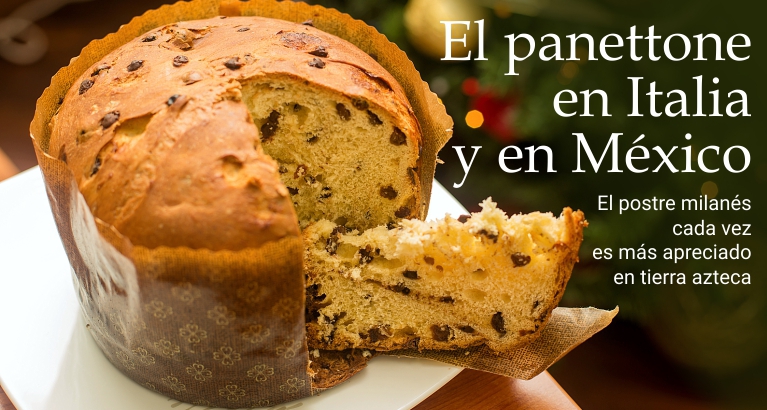
A pastry masterpiece. In 2016 the English preferred it, as a Christmas dessert, to the traditional pudding. Interpreted in a thousand versions by skilled pastry chefs now in every region of Italy, panettone is known throughout the world.
But how and where did this dessert originate? Its origins mix history and legend.
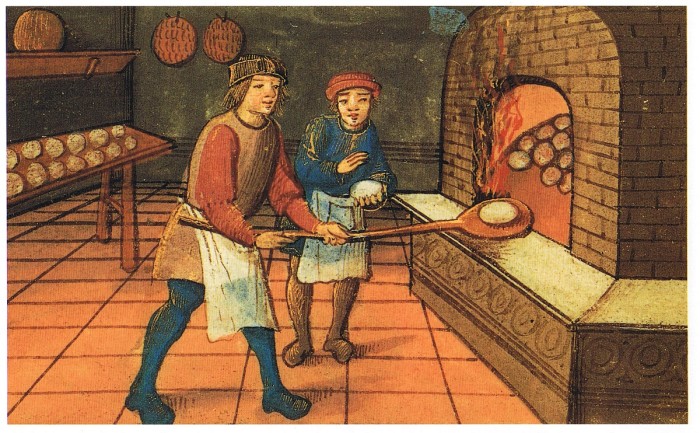
How panettone was born: historical sources.
The first steps in the history of panettone were taken in a document written in 1470 by Giorgio Valagussa, tutor of the Sforza family, which reports the so-called “ciocco ritual”.
At Christmas in every house a large wooden log was placed on the fire. Then all the guests ate slices of wheat bread distributed by the head of the family, who kept one for the following year, as a good wish. That bread had, especially for the poor, a special value. In fact, bakers, except those who made bread for the nobles, were forbidden to use wheat flour during the year, a prized and prerogative of the rich. However, the Milanese guilds had decided that at Christmas everyone would eat the same bread, called “Pan de Sciori” or “Pan de Ton”, that is, luxury bread of the lords, which was enriched with sugar, butter and eggs.
What can begin to be defined as a panettone recipe dates back to 1549. Cristoforo di Messisbugo, a chef from Ferrara, lists the ingredients of a dessert from the Milanese area – flour, butter, sugar, eggs, milk and rose water – adding that it must rise well and have a round shape.
In 1599, in the notes of a register of the Borromeo College of Pavia regarding the expenses of the Christmas lunch, there is mention of three pounds of butter, two of raisins and two ounces of spices which would have been used to prepare “13 large loaves”. A recipe that is very similar to the definitive one for panettone and on the basis of which, every now and then, the people of Pavia try to claim its origin.
The first official definition of panettone dates back to 1606: “panaton”, in the Milanese-Italian dictionary, is a large bread prepared at Christmas.
In the 18th century, Pietro Verri proposed, in his History of Milan, the ritual of the stump at the Sforza court, also taken up by Antonio Muratori who linked it to ancient pagan customs and traced it back to the first years after the year 1000.
Panettone are still very low, similar to focaccia, yeast makes its appearance in a recipe book from 1853, by Giovanni Felice Luraschi. Candied fruit, however, was spoken of the following year, in a pastry treatise by Giovanni Vialardi, chef of the Savoy rulers, testifying to the diffusion of panettone which was spreading throughout Northern Italy.
Happy Luraschi. Candied fruit, however, was spoken of the following year, in a pastry treatise by Giovanni Vialardi, chef of the Savoy rulers, testifying to the diffusion of panettone which was spreading throughout Northern Italy.
How panettone was born: the legends.
“Panettone” would therefore mean “large bread”. In reality the augmentative of bread is “panone”: hence the idea of some according to which the term could derive from the voluminous stick of butter in the shops, then divided among the customers, or from the stick of yeast which during the preparation phases of the sweet took on large dimensions.
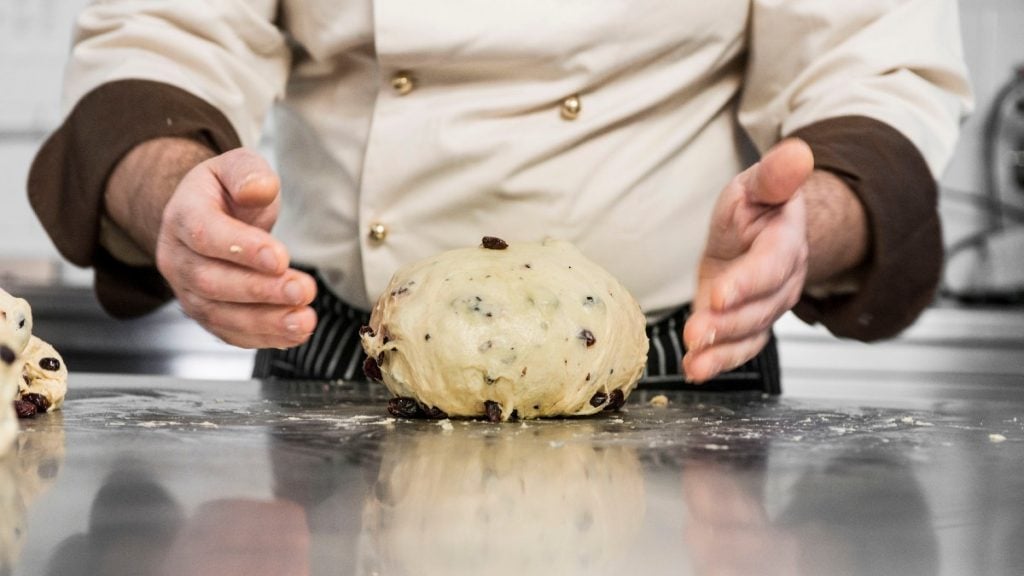
Etymological explanations are plentiful. In this regard it seems that in the 19th century legends developed linking panettone, or its ingredients, to the name of hypothetical inventors. Characters like Toni or the unlikely Ughetti – in Milanese “Ughett” means raisins -. Events full of tangles, like the knitting of a leavened product. They mix elements in that wireless telephone which is the handing down of stories but, rooted in tradition, they deserve some mention.
The first dates back to 1495. Ludovico il Moro’s cook burns the dessert for the Christmas dinner. The boy, Toni, has a loaf of yeast set aside for himself with which he kneads an amazing dessert, called “pan del Toni”, which becomes tradition. Some versions have the kitchen boy burning the final dish, in others it is the same burnt dessert, containing grapes, which on Toni’s idea is served anyway, justifying the crust as a peculiarity. The variations are numerous, there is one for ughett…
Still at the Sforza court is the story of Ulivo – or Ughetto – degli Atellani, the duke’s falconer. He falls in love, reciprocated, with Adalgisa, daughter of the baker Toni. Hindered by social differences, to spend time with his beloved he gets hired by Toni as a boy, in disguise. Then, realizing the baker’s difficult economic situation, he invents a dessert that he makes at night by adding ingredients that he buys by selling the Duke’s falcons to the bread dough: sugar, butter, eggs, citron and raisins. The special bread from Toni’s bakery becomes so famous that it eclipses both the theft of the falcons – the duke forgives him – and the difference in class, because Ughetto’s father agrees to the wedding between the two lovers.
The third legend sees Sister Ughetta, a cook in a very poor convent, putting together a few ingredients to create a dessert that will cheer up her sisters on the occasion of Christmas. Eggs, candied fruit, raisins and sugar join the bread dough. Before baking it, he engraves a cross on it, blessing it. The result is a dessert so good and beautiful that the Milanese, in order to have some, will flock to the convent, amplifying the offerings and reviving their fortunes.
How panettone was born: the legend.
“Panettone” would therefore mean “large bread”. In reality the augmentative of bread is “panone”: hence the idea of some according to which the term could derive from the voluminous stick of butter in the shops, then divided among the customers, or from the stick of yeast which during the preparation phases of the sweet took on large dimensions.
Etymological explanations are plentiful. In this regard it seems that in the 19th century legends developed linking panettone, or its ingredients, to the name of hypothetical inventors. Characters like Toni or the unlikely Ughetti – in Milanese “Ughett” means raisins -. Events full of tangles, like the knitting of a leavened product. They mix elements in that wireless telephone which is the handing down of stories but, rooted in tradition, they deserve some mention.
The first dates back to 1495. Ludovico il Moro’s cook burns the dessert for the Christmas dinner. The boy, Toni, has a loaf of yeast set aside for himself with which he kneads an amazing dessert, called “pan del Toni”, which becomes tradition. Some versions have the kitchen boy burning the final dish, in others it is the same burnt dessert, containing grapes, which on Toni’s idea is served anyway, justifying the crust as a peculiarity. The variations are numerous, there is one for ughett…
Still at the Sforza court is the story of Ulivo – or Ughetto – degli Atellani, the duke’s falconer. He falls in love, reciprocated, with Adalgisa, daughter of the baker Toni. Hindered by social differences, to spend time with his beloved he gets hired by Toni as a boy, in disguise. Then, realizing the baker’s difficult economic situation, he invents a dessert that he makes at night by adding ingredients that he buys by selling the Duke’s falcons to the bread dough: sugar, butter, eggs, citron and raisins. The special bread from Toni’s bakery becomes so famous that it eclipses both the theft of the falcons – the duke forgives him – and the difference in class, because Ughetto’s father agrees to the wedding between the two lovers.
The third legend sees Sister Ughetta, a cook in a very poor convent, putting together a few ingredients to create a dessert that will cheer up her sisters on the occasion of Christmas. Eggs, candied fruit, raisins and sugar join the bread dough. Before baking it, he engraves a cross on it, blessing it. The result is a dessert so good and beautiful that the Milanese, in order to have some, will flock to the convent, amplifying the offerings and reviving their fortunes.
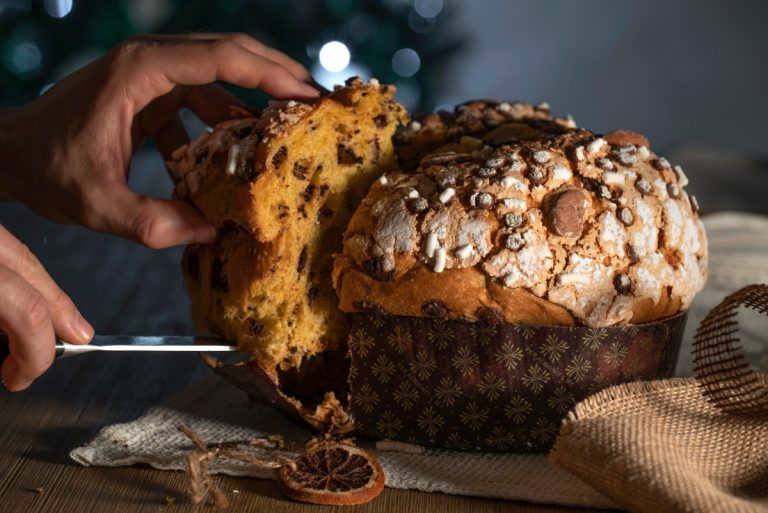
How panettone was born: its diffusion.
In the second half of the nineteenth century, testimonies of pastry chefs making panettone multiplied. It is a production that is still exclusively artisanal and is aimed at a limited audience. The habit was also established, still widespread today, of sending panettone as thanks for work collaborations. Famous in this sense is, for example, Giovanni Ricordi. The round desserts begin to travel up and down Italy.
After the war, the introduction of sourdough and the addition of more eggs and butter enriched the preparation of the dessert and meant that it required the use of a mould, which saw the panettone rise upwards and at the same time downwards. industrialization, mass diffusion. Together with its friend and rival Pandoro, panettone arrives on all tables and becomes the typical dessert of Italian Christmas. Even today, as early as November, industrial panettone crowds onto supermarket shelves.
The artisan workshops certainly took inspiration from the changes made to the recipe of the panettone which later became widely consumed. They assimilated them and used them to improve theirs. Both tall and short panettoni now coexist in pastry shops but in both cases they have nothing to do with industrial ones. The noble artisan tradition has remained, has been perfected and has also seen its boundaries widen.
Today numerous pastry shops scattered almost everywhere on the peninsula have developed their own tradition, and offer palate experiences that are worth having and that only an artisanal panettone can offer.
The mother of panettone is Milan, and there is no question. When you hear that Shakespeare, the most English of the English, could be from Messina, the laughter abounds. But there are, it must be admitted, things and people that can become the good of all humanity. And to hear that many pastry chefs in Italy now know how to excel in the production of panettone, Sir William himself would say “it’s true, and we don’t make much fuss about nothing”.
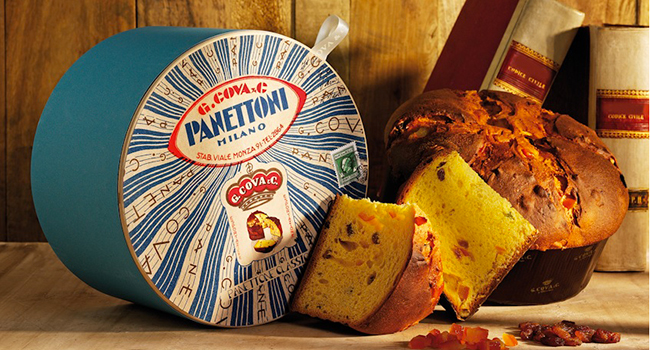
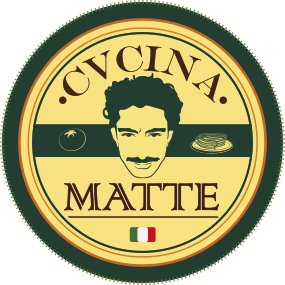
Deja un comentario